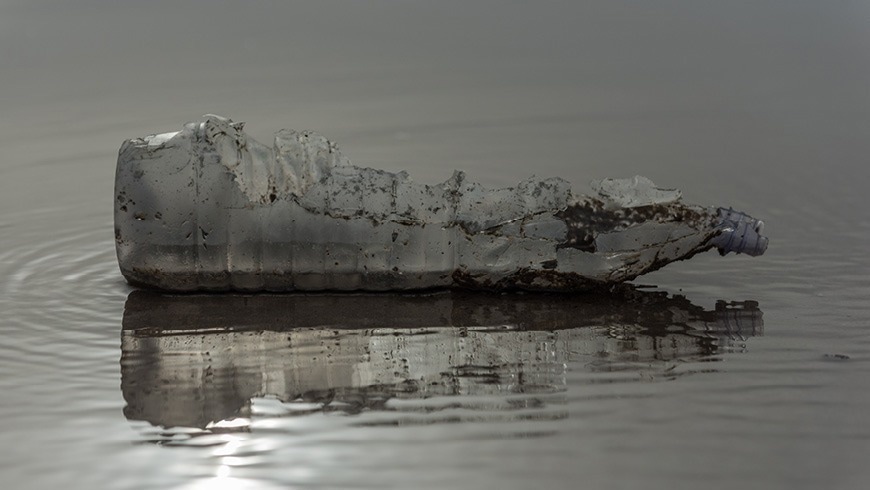Microplastics are particles of plastic that are below 5 mm in size. They often settle far away from their point of origin. Now, scientists from Empa have developed a model that can be employed to calculate the microplastics’ concentration in Swiss rivers and lakes.
 One of the ways microplastics gets into the environment is by degradation and abrasion of larger pieces of plastic. Image Credit: Bernd Nowack, Empa
One of the ways microplastics gets into the environment is by degradation and abrasion of larger pieces of plastic. Image Credit: Bernd Nowack, Empa
Annually, 14,000 tons of plastic end up in Swiss waters and soils, partially in the form of microplastics, particles in the micro to millimeters range. Microplastics originate from many sources, like synthetic fiber clothing or cosmetics. The tiny particles are also generated by the decomposition and abrasion of larger plastic pieces, known as macroplastics.
Thanks to their tiny size, microplastics particles enter waterways readily. Approximately 15 tons of microplastics enter Swiss lakes and rivers annually. Quantifying their concentration in water is not a seamless job, as the tiny polymer pieces are usually difficult to categorize from particles of natural origin, and their quantity differs greatly with the place and time of measurement along with the measurement method.
Seven Most Common Plastics
Measurements alone are usually insufficient when estimating the level of microplastic pollution in lakes and rivers of larger regions, such as Switzerland. For the same reason, Empa scientists David Mennekes and Bernd Nowack have built a model for the Federal Office for the Environment (FOEN) that can anticipate the concentration of microplastics in waterbodies nationwide.
Basically, the scientists employed a model developed in 2020, showing where and in what quantities the seven most common polymers are released into the environment as micro- and macroplastics: polyethylene (LD-PE and HD-PE), polystyrene, polypropylene, and expanded polystyrene, PET and PVC, as employed in textiles, packaging, insulation, and agricultural films.
After we were able to show where and in what amounts plastic enters the environment, the logical next step was to show its concentration.
Bernd Nowack, Researcher, Empa Swiss Federal Laboratories for Materials Science and Technology
Large Cities Are Polluting Water Bodies
As per the new model, about half of the microplastics that comes into Swiss waters remain in the country. Approximately one-third of the total quantity stays in lakes and rivers. The precise microplastics distribution, however, can be complex: A longer river does not automatically retain more particles than a shorter one. Instead, the barrages, the river basin, and the lakes decide how much microplastics settle in the river and how much is transported further.
As expected, exceptionally high levels of microplastic pollution can be determined downstream from major cities. The Rhine near Basel comprises the highest concentration of microplastics: The river carries around 4,500 tons of them toward Germany annually. This is also owing to the Aare, which, along with its tributaries Limmat and Reuss, drains the three largest cities of Switzerland before flowing into the Rhine: Zurich, Bern, and Lucerne.
Measurements are only possible at specific locations. With our model, on the other hand, we can calculate the microplastics load throughout the country. Furthermore, it allows us to estimate what effects behavioral changes or government measures would have on microplastics concentrations.
Bernd Nowack, Researcher, Empa Swiss Federal Laboratories for Materials Science and Technology
The results were published by researchers in the new journal Nature Water.
Also, the model can be applied to other countries and regions. Nowack and Mennekes, at the same time, are concentrating on Switzerland. They are already building a comparable model to forecast the amount of macroplastics—like plastic bags and PET bottles—in waterbodies. In a step forward, the modeled plastic concentrations have the potential to be employed to estimate the threat to the environment in the respective areas.
Journal Reference:
Mennekes, D., & Nowack, B. (2023). Predicting microplastic masses in river networks with high spatial resolution at country level. Nature Water. https://doi.org/10.1038/s44221-023-00090-9.